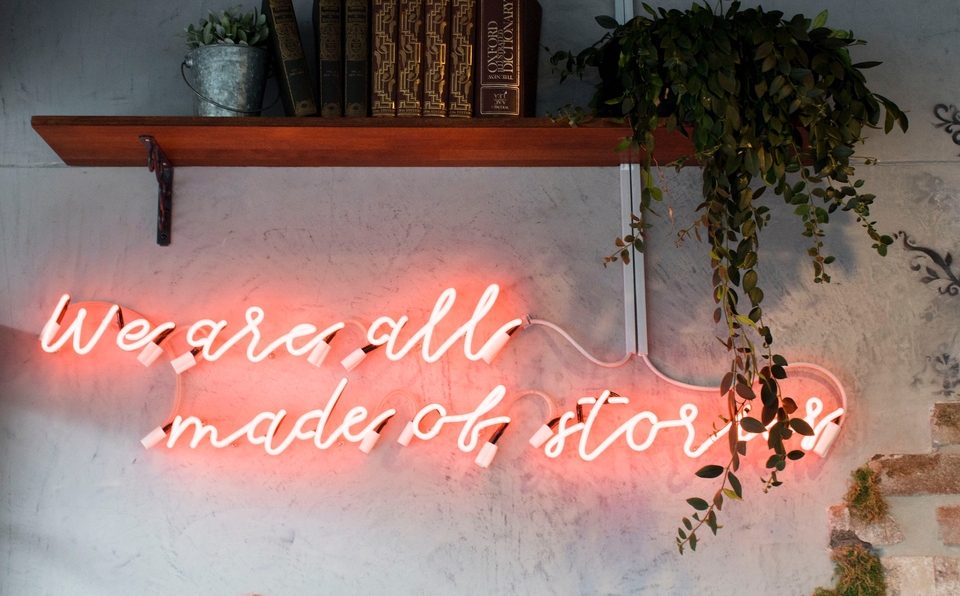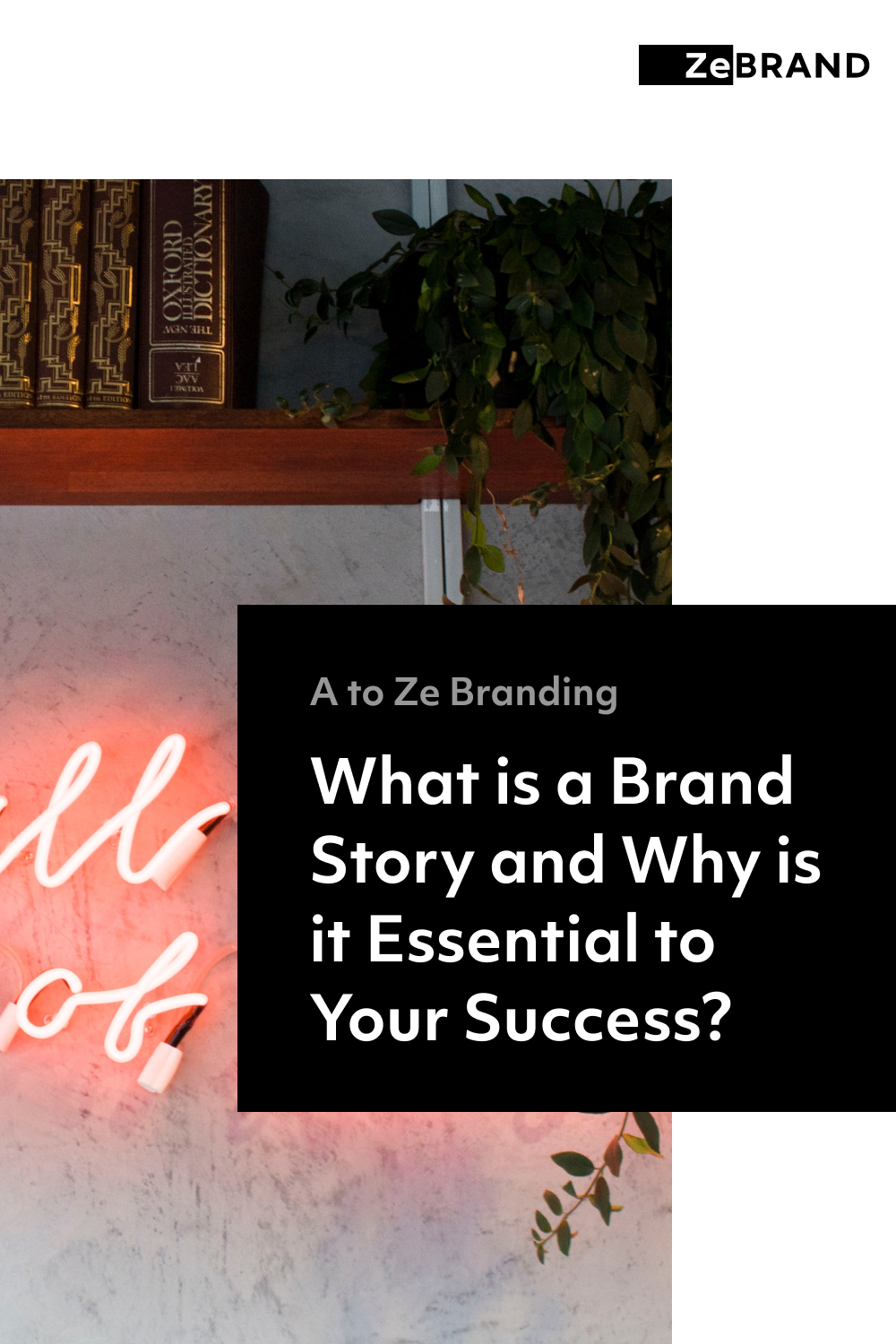What is a Brand Story and Why is it Essential to Your Success?

We are all made of stories.
What is a brand story?
A brand story is a story of how a brand came to be. Note that we use the word “brand” and not “business.” While a business and the brand are generally one and the same, it’s best to think of them as two different entities. Your business is what you do, while your brand is why you do it and how you do it.
If you think about your brand story in terms of your business, you’ll probably come up with very little compelling material. Most people start a business because they’re good at something or have an idea they think can make money. In other words, the story is dry and nothing new.
However, if you reframe and think about your brand story in terms of your brand, you can tap into relatable emotions that compel your audience and create a deeper connection.
Why is brand storytelling important?
Humans love stories. Since we first started stringing words together, we’ve shared stories verbally, through our art, and later via the written word. Stories are what help us connect and empathize with one another.
So, why does that matter? Because in business (especially in marketing), our success relies on our ability to build trust and produce work that encourages others to pass on a “story” about us. While you may think of the media you consume when you think of a story, the reality is even a customer review is a story.
If you want to connect with your audience and customers and create superfans, you need to be able to tell your story. Almost every purchase we make is an emotional decision, so you need to show your customers why they should buy from you.
If you don’t define your brand story and values, every sale will be a struggle. Do the opposite, and you’ll be able to build momentum until the majority of your customers are coming to you.
What is a good brand story example?
Now, you know what brand story is in theory, let’s take a look at an example from the fitness brand SoulCycle.
SoulCycle has an almost cult-like following, and those who go to their classes love them. SoulCycle is—boiled down—a spin class. Of course, people who go don’t see it that way – they don’t see that one 45-minute class costs almost as much as a gym membership. They go for the community and the experience they have in their classes. SoulCycle has high-energy instructors that offer inspirational and motivational speaking throughout the session.
Here’s what they have to say on their Our Story page (where you can also find their full brand story):
“At SoulCycle… we aspire to inspire. We inhale intention and exhale expectation. We commit to our climbs and find freedom in our sprints. We are a fitness community raising the roof at our own cardio party. The rhythm pushes us harder than we ever thought possible.
Our own strength surprises us every time. Addicted, obsessed, unnaturally attached to our bikes. High on sweat and the hum of the wheel. Core engaged, we reshape our entire bodies, one ride at a time. Change your body, take your journey, find your soul.”
Whether SoulCycle appeals to you or not, this clearly outlines what they value, what kind of person they serve, and sets expectations for the kind of experience you’ll have at one of their classes. If you turned up and the class was on old bikes in a high school gym, you’d be pretty disappointed.
You can also see how their brand story repels someone who’s not the right fit. If you are someone who hates working out with others and wants to go at your own pace, you’re probably not going to like it. If you think the idea of finding your soul while in a room with other people on a stationary bike is dumb, you’ll click off the page.
Repelling is good. Your story should connect deeply with your ideal customer. It doesn’t need to impress anyone else.

How do you write a brand story?
Before you sit down to write your brand story, you need to make some notes. Open a new document or grab a notebook and answer the following questions:
- What 5 things do we value above all else?
- Why do we love serving our ideal customer?
- Why does our ideal customer love us?
- Who do we absolutely not want to work with? Why would they not want to work with us?
- What personality traits does our brand have?
- What kind of language do we use to communicate with our customers?
- What’s the big picture that makes us excited to get up every morning?
- Why did I/we start this business, and not any other?
When you’ve got some notes on all of these things, you’ll be in a strong position to start writing your brand story. Now let’s look at what your brand story should include and how you can structure your story.
What should a brand story include?
What 3 things does every story need? A beginning, a middle, and an end. Fortunately, you don’t need to blandly tell the story of how you got your idea, founded the company, and started selling your product or service. Instead, you can think of it this way:
The Beginning: This is where you can state the problem that sparked this business in the first place. Don’t forget to infuse your values here for that emotional connection – you don’t simply want to state the problem, especially if it’s not an obviously compelling problem (such as the desire for a new luxury handbag or frosted window decals).
The Middle: Now, you can move into your solution. Make sure that you talk about your solution – how is this solution unique to you? For example, if you sell frosted window decals, the problem is that your neighbors can see in your windows when the curtains are open, and a frosted window decal lets in the light but not those curious eyes. Necessary, but not compelling. But does your solution allow you to see out, but not others in? Are they easy to apply and remove for renters? Are they particularly stylish? Are they made in an eco-friendly way? Make sure you convey why you’re special in the voice that appeals most to your ideal customer.
The End: Here, you don’t want to talk about where you hope to end up. Instead, talk about the solution's success, your excitement to bring it to more people, and how you connect with your customers and/or community.
Remember, your brand story isn’t just so you have something to put on your “About” page or a marketing tool – it’s your foundation. It’s an emotional hook that connects you to your audience. It acts as a compass for your brand and informs your visual brand, brand voice, and actions.
How do I find my brand story?

If you still feel a little at sea, don’t panic. You can’t get this “wrong,” and you can always come back and tweak it later. If you realize that your ideal customer is slightly different than the one you started with, you can simply edit your brand story to reflect that.
So, now the pressure’s off, start with your “why.” Why did you start this business beyond to simply make money?
Next, move onto impact. What impact do you want to see your brand make in the world?
Now address your problem and solution. How does your why and the impact you want to make mesh with your solution?
Finally, think about how you connect with your ideal customer. What language will they connect with most?
When you’ve got all these pieces, you can assemble them into a compelling brand story. Go back to the structure we discussed in the point above, and start drafting your brand story. You’ve got this!
Next Step: Brand Identity
Now you know what goes into your brand story, you need a brand identity to match. Working with a branding expert or agency is an expensive business, and a few startups have the budget for it. That’s why we’ve made it easy – we help new and evolving businesses brand their way to growth by generating a solid, original brand identity. After you complete a quick 5-minute questionnaire, our algorithm and AI will generate your one-of-a-kind brand guidelines. It’s completely free to get started! Just click here.



